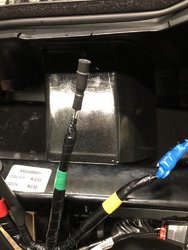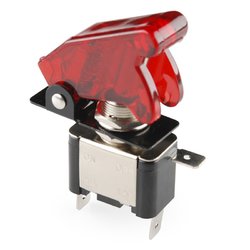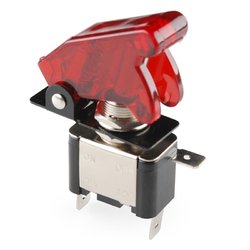I have a terra 45 and had no problem with mounting on KFI mount and did not need longer bolts or need to trim anything. Was a simple straight forward install. Also the cables with the Terra 45 were long enough to reach from batter to my bus bar. I had originally used a 6 gage jumper cable but replaced that when i got the Terra 45I also got to wondering when I sat the winch in there on the KFI mount with it being kind of tight like it is (which I like it’s compact and looks good) how in the world did some get these larger winches like a wide spool terra 45 in there on the KFI mount!?!
You are using an out of date browser. It may not display this or other websites correctly.
You should upgrade or use an alternative browser.
You should upgrade or use an alternative browser.
tomcj2
I forgot the ditch was so close
Lifetime Member
I have read many posts here and on other sites about wire size and use of circuit breakers. Today I sent the following e-mail to KFI:
I am going to install a 3500 Stealth Winch in my Pioneer 500 Is there any overcurrent protection device in the contactor or the winch itself?
Is a fuse/breaker required to protect the wire from the battery to the contactor/relay? If so, what size?
After reading many on-line posts it appears that the supplied cables may not be long enough. I am considering using welding cable from the battery to the contactor. The cables supplied appear to be 8 awg that seems very small for the maximum current draw of 230 amps. I realize that these are not continuous duty motors, but should I install 4 gauge to reduce voltage loss and heating of wire?
I look forward to your prompt response.
Within a couple of hours received their response:
We do not have a fuse/breaker in our system. You can add one into the system but if you used the winch intermittently like you're supposed to and check the motor heat you won't burn it up.
If you were going to put one on I would do a 100-120 amp that is also waterproof. Also I would keep the gauge of the wire the same.
It is not the response that I wanted. I was actually looking for "carved in stone" recommendations. I was impressed by their speed at responding to me.
I was going to try the same question to WARN, but they list no email address for technical support. I'll wait for their west coast offices to open to phone them. If I get any information from them I'll pass it on.
ADDITIONAL INFORMATION:
I just phoned WARN and spoke with Russell in their technical department. He said that their 3500 lb winches come with #6 wire and if adding only a couple of additional feet there is no need to increase size.
As far as fusing he agreed that there is no protection. He indicated that even their very large 600a winches run without protection and he has never heard of a problem associated with lack of overcurrent protection. He suggested that care should be taken with running the cable to ensure it is not subject to physical damage.
I am going to install a 3500 Stealth Winch in my Pioneer 500 Is there any overcurrent protection device in the contactor or the winch itself?
Is a fuse/breaker required to protect the wire from the battery to the contactor/relay? If so, what size?
After reading many on-line posts it appears that the supplied cables may not be long enough. I am considering using welding cable from the battery to the contactor. The cables supplied appear to be 8 awg that seems very small for the maximum current draw of 230 amps. I realize that these are not continuous duty motors, but should I install 4 gauge to reduce voltage loss and heating of wire?
I look forward to your prompt response.
Within a couple of hours received their response:
We do not have a fuse/breaker in our system. You can add one into the system but if you used the winch intermittently like you're supposed to and check the motor heat you won't burn it up.
If you were going to put one on I would do a 100-120 amp that is also waterproof. Also I would keep the gauge of the wire the same.
It is not the response that I wanted. I was actually looking for "carved in stone" recommendations. I was impressed by their speed at responding to me.
I was going to try the same question to WARN, but they list no email address for technical support. I'll wait for their west coast offices to open to phone them. If I get any information from them I'll pass it on.
ADDITIONAL INFORMATION:
I just phoned WARN and spoke with Russell in their technical department. He said that their 3500 lb winches come with #6 wire and if adding only a couple of additional feet there is no need to increase size.
As far as fusing he agreed that there is no protection. He indicated that even their very large 600a winches run without protection and he has never heard of a problem associated with lack of overcurrent protection. He suggested that care should be taken with running the cable to ensure it is not subject to physical damage.
Last edited:
H
I have a terra 45 and had no problem with mounting on KFI mount and did not need longer bolts or need to trim anything. Was a simple straight forward install. Also the cables with the Terra 45 were long enough to reach from batter to my bus bar. I had originally used a 6 gage jumper cable but replaced that when i got the Terra 45
I agree install is very straight forward. Just wasn’t a lot of room in there behind that bumper on the KFI mount. Now that mine is bolted down I could actually see how a wide spool would have made fastenings the bolts down easier. This superatv winch on the legs has slots cut out with a fixed fastener/but inside them. Was a little tricky getting it all lined up but turn out nice and solid. I’d rather the legs just take a bolt and nut on the exterior of them if that makes sense. Overall I’m very pleased. Gonna look good with the orange rope on there. Just have to get it wired up now. Trying to decide where to mount the solenoid. I’m thinking either deep on the firewall up under there right near the 12v outlet cable or come up to the next bend on the upper firewall or I could attach it to the cross member in there.
H
I have read many posts here and on other sites about wire size and use of circuit breakers. Today I sent the following e-mail to KFI:
I am going to install a 3500 Stealth Winch in my Pioneer 500 Is there any overcurrent protection device in the contactor or the winch itself?
Is a fuse/breaker required to protect the wire from the battery to the contactor/relay? If so, what size?
After reading many on-line posts it appears that the supplied cables may not be long enough. I am considering using welding cable from the battery to the contactor. The cables supplied appear to be 8 awg that seems very small for the maximum current draw of 230 amps. I realize that these are not continuous duty motors, but should I install 4 gauge to reduce voltage loss and heating of wire?
I look forward to your prompt response.
Within a couple of hours received their response:
We do not have a fuse/breaker in our system. You can add one into the system but if you used the winch intermittently like you're supposed to and check the motor heat you won't burn it up.
If you were going to put one on I would do a 100-120 amp that is also waterproof. Also I would keep the gauge of the wire the same.
It is not the response that I wanted. I was actually looking for "carved in stone" recommendations. I was impressed by their speed at responding to me.
I was going to try the same question to WARN, but they list no email address for technical support. I'll wait for their west coast offices to open to phone them. If I get any information from them I'll pass it on.
ADDITIONAL INFORMATION:
I just phoned WARN and spoke with Russell in their technical department. He said that their 3500 lb winches come with #6 wire and if adding only a couple of additional feet there is no need to increase size.
As far as fusing he agreed that there is no protection. He indicated that even their very large 600a winches run without protection and he has never heard of a problem associated with lack of overcurrent protection. He suggested that care should be taken with running the cable to ensure it is not subject to physical damage.
Good to know. So basically you can wire your winch up as it comes, “set it and forget it” or if one feels better about a circuit breaker or fuse that doesn’t hurt anything either. I’ve never used a circuit breaker in the past. But I am with my pioneer 500.
nctrailboss
Well-Known Member
Supporting Member
Ok so I just picked up a KFI 3500 stealth.. it comes with 3 ft of black and red and looks like 8ft of blue and yellow... appears to be 8 gauge wire... Want to mount contactor under hood next to choog box... any problem with me running 6 gauge jumper cable wirefrom battery to up there? And question two with the factory subharness I just run the hot wire from the rocker and remote into the single green wrapped wire on there? Forgive me if this has already been explained I’m not much on wiring... these two pigtail at contactor can I run both those off one of the harness plugs or use two separate?
tomcj2
I forgot the ditch was so close
Lifetime Member
Most homes built before the mid 1980's have no circuit protection for the wire between the meter and the panel.Just food for thought,most vehicles do not have any circuit protection between the battery and starter solenoid.
H
Ok so I just picked up a KFI 3500 stealth.. it comes with 3 ft of black and red and looks like 8ft of blue and yellow... appears to be 8 gauge wire... Want to mount contactor under hood next to choog box... any problem with me running 6 gauge jumper cable wirefrom battery to up there? And question two with the factory subharness I just run the hot wire from the rocker and remote into the single green wrapped wire on there? Forgive me if this has already been explained I’m not much on wiring... these two pigtail at contactor can I run both those off one of the harness plugs or use two separate?
You can pretty much mount your contactor/solenoid anywhere you want. Most mount it under the hood somewhere up high an dry. I along with others have replaced the wires that come with the winch with either 4 or 6 gage. I used 4 gage. I bought a set of 4 gage jumper cables and made my wires from that. Your wires for the subharness should either connect from a wire coming off the solenoid going to the harness or from the switch to solenoid I think? Prettt sure it has to run through the solenoid. I just know on my superatv I have a Y adaptor coming off the contactor my wireless and rocker switch screw into the Y adaptor coming off the contactor/solenoid. Then there is a red wire from the solenoid that I hook into the green pig tale off the subharness. Hope that helps and isn’t confusing.
So here is the setup.. rocker and remote pigtail green to green black to black into contactor...You can pretty much mount your contactor/solenoid anywhere you want. Most mount it under the hood somewhere up high an dry. I along with others have replaced the wires that come with the winch with either 4 or 6 gage. I used 4 gage. I bought a set of 4 gage jumper cables and made my wires from that. Your wires for the subharness should either connect from a wire coming off the solenoid going to the harness or from the switch to solenoid I think? Prettt sure it has to run through the solenoid. I just know on my superatv I have a Y adaptor coming off the contactor my wireless and rocker switch screw into the Y adaptor coming off the contactor/solenoid. Then there is a red wire from the solenoid that I hook into the green pig tale off the subharness. Hope that helps and isn’t confusing.
Then there is a red power on each.. so they go into the factory sub harness with the green wrap?


advertisement
H
So just a hot for power with ignition I assume for the switches
I think that is correct. Your switches rocker and remote should hook to the solenoid or contactor whichever you want to call it and then a hot wire coming off the solenoid for “key on power” to the green pig tail that’s on the subharness. What does the KFI instructions say? There’s about two ways it can be done.
Instructions say run to ignition power on the reds... I assume that’s what the harness is for...I think that is correct. Your switches rocker and remote should hook to the solenoid or contactor whichever you want to call it and then a hot wire coming off the solenoid for “key on power” to the green pig tail that’s on the subharness. What does the KFI instructions say? There’s about two ways it can be done.
I haven’t read much about any of it... figure it’s easier to figure and ask specific questions and get good answers like you get on this forum... thanks for the info well appreciated
H
@Kracker took a look at the diagram. Per the Honda instructions the green pig tale is for the winch on the subharness
Thanks I thought that’s what it was just making sure that’s for the power wire...(red) I’m kinda slow sometimes appreciate the help@Kracker took a look at the diagram. Per the Honda instructions the green pig tale is for the winch on the subharness
H
Thanks I thought that’s what it was just making sure that’s for the power wire...(red) I’m kinda slow sometimes appreciate the help
No problem. Hope I’ve been some help An not confusing. I’ve had to learn some of this myself in relation to circuit breakers and this subharness. This is a new way to wire a winch for me an one that I haven’t done in the past. But I finally have mine figured out how to do it.
Ok thanks... I guess that’s in the fuse box under accessories or harness or something...@Kracker i also recently learned that the subharness is fused already on the machine from the factory think it’s a 15amp fuse. Just FYI. So when you plug it in to the connection under the hood it’s fused.
Nope u didn’t confuse me u helped a lot thanks
tomcj2
I forgot the ditch was so close
Lifetime Member
Insofar as the winch is seldom used I will probably mount a switch in an obscure place to control the "Key On Power" line. This should prevent somebody (my Grandson?) from inadvertently pressing the toggle switch and damaging the winch, plough et cetera. The cover of the switch must be raised and the toggle flipped to complete the circuit; when the cover is lowered the circuit is automatically broken.




Last edited:
Mudder
NTC/TAP Transition Member
Lifetime Member
Nice looking switches, but seems like extra effort to just using an key-ignition-on power source. Might be misunderstanding comment, but control the key from little ones, like a gun is my approach, as its like a car from a safety standpoint. My grandkid just needs to watch me do something once and figures it out. That said, a switch is cheap piece of mind if it helps.Insofar as the winch is seldom used I will probably mount a switch in an obscure place to control the "Key On Power" line. This should prevent somebody (my Grandson?) from inadvertently pressing the toggle switch and damaging the winch, plough et cetera. The cover of the switch must be raised and the toggle flipped to complete the circuit; when the cover is lowered the circuit is automatically broken.
View attachment 88557 View attachment 88558
Last edited:
advertisement
Similar threads
- Replies
- 7
- Views
- 830
S
- Replies
- 6
- Views
- 963
D
- Replies
- 30
- Views
- 2K


